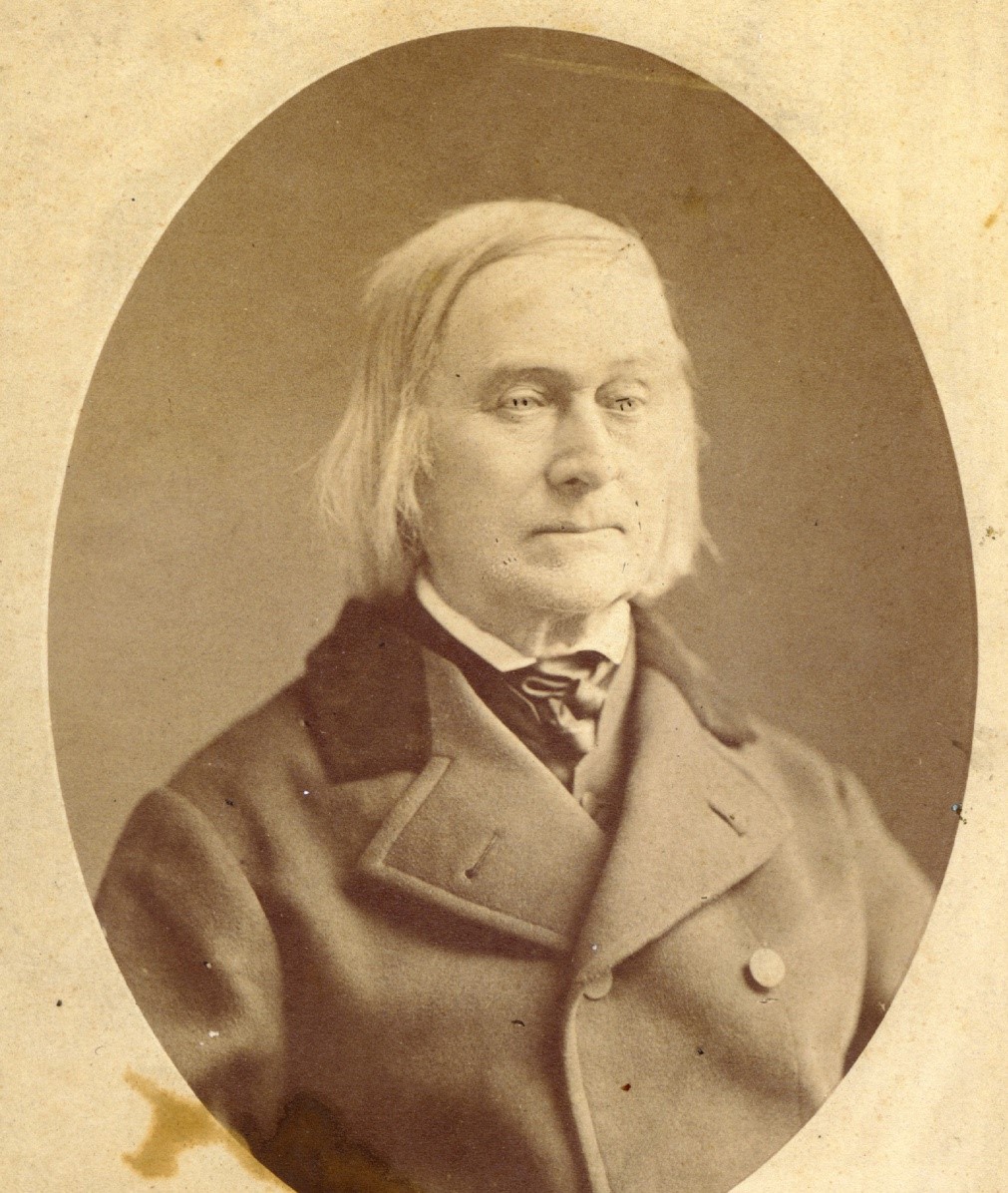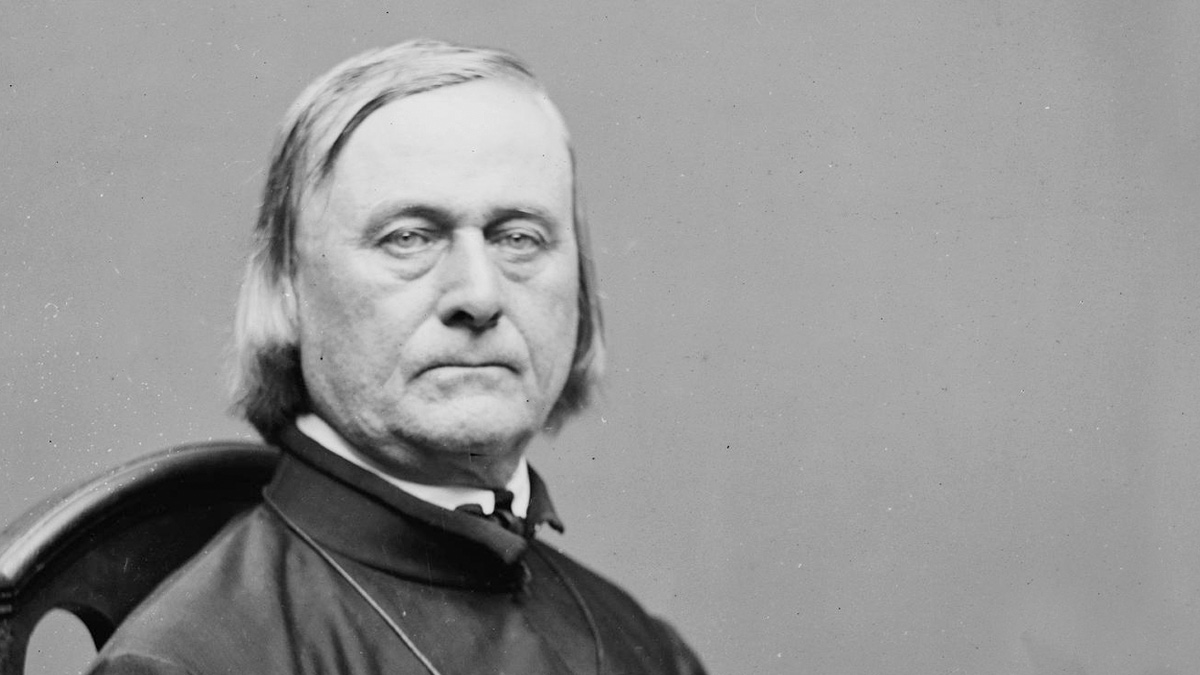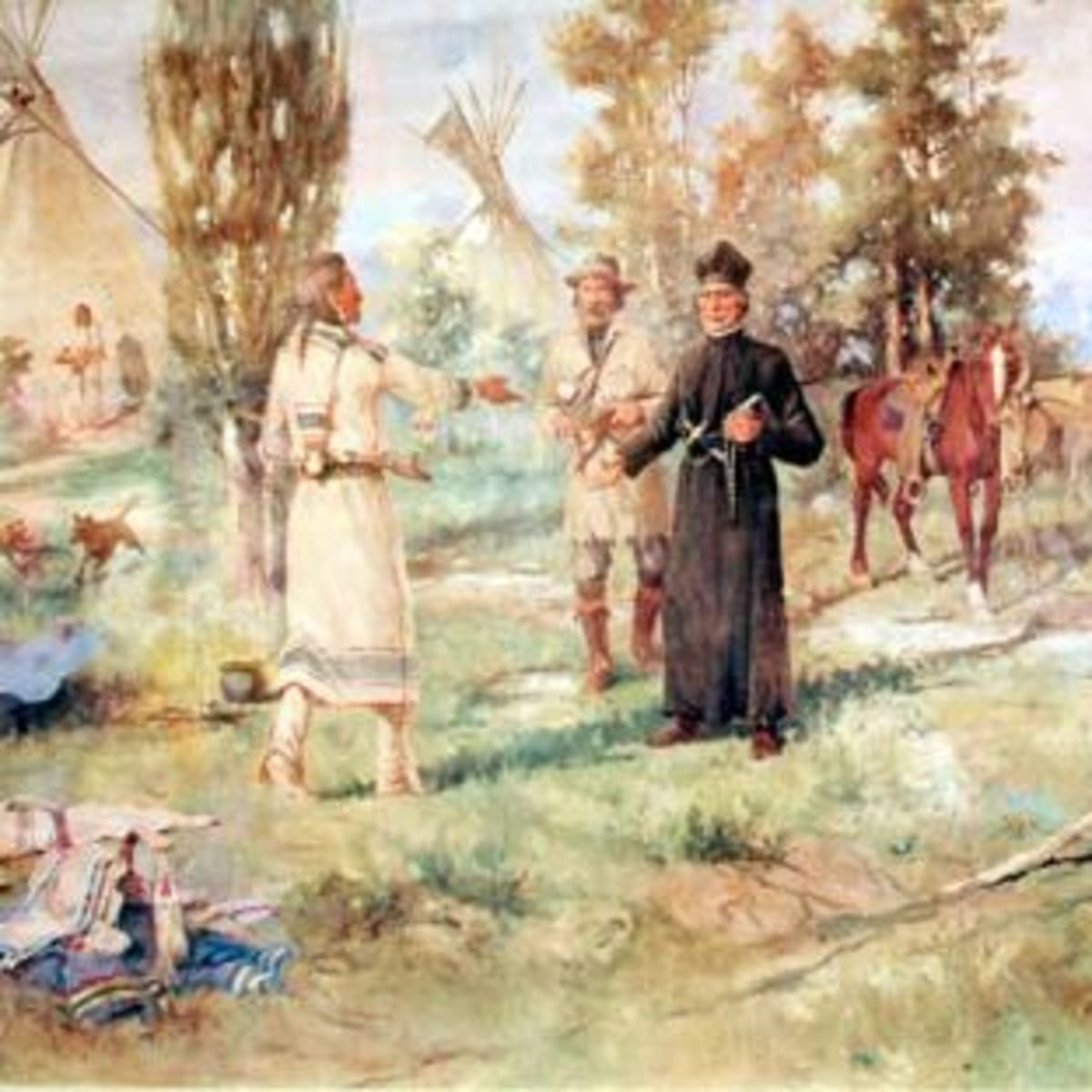
Have you ever come across the extraordinary tale of a man who served as a vital link between two vastly different worlds? Allow me to introduce you to **Pierre-Jean de Smet**, a Belgian Jesuit missionary whose life unfolded as an incredible odyssey across the American frontier. His narrative transcends mere religious devotion; it encompasses themes of diplomacy, adventure, and a relentless pursuit of harmony between Native American tribes and the settlers who were gradually encroaching upon their lands. De Smet’s experiences were marked by his deep commitment to fostering understanding and cooperation among diverse cultures during a time of significant upheaval. Join me as we explore the captivating life and legacy of this remarkable individual, whose efforts left an indelible mark on the history of the American West.
Early Life and Journey to America

Born in Belgium
Pierre-Jean de Smet entered the world on January 30, 1801, in the quaint town of Termonde, Belgium. He was raised in a deeply religious family that instilled in him a strong sense of duty and compassion for others. From a young age, he felt a calling to serve, which sparked a desire to make a meaningful impact in the lives of those around him. However, the question remains: what compelled him to leave the familiar comforts of his homeland and venture into the vast and uncharted territories of America?
Arrival in the United States
In July 1821, de Smet took a significant step in his life by arriving in the United States, filled with hope and determination to embark on a mission that would not only transform his own life but also the lives of countless others. He soon joined the Jesuit novitiate located in White Marsh, Maryland, where he began an intensive period of spiritual training and personal development, laying the foundation for his future work.
Ordination and Early Missions
After dedicating two years to his novitiate, de Smet made his way to Missouri, where he was ordained as a priest in 1827. This pivotal moment marked the beginning of a lifelong association with the Roman Catholic St. Louis College, an institution that would play a crucial role in shaping his future endeavors and missionary work. His commitment to his faith and his passion for serving others would guide him through the challenges and triumphs that lay ahead in his remarkable journey.
First Encounters with Native Tribes

Establishing His First Mission
In the year 1838, Father Pierre-Jean de Smet took a significant step in his missionary work by founding his very first mission among the Potawatomi people, located near what is now known as Council Bluffs, Iowa. This initial endeavor marked the beginning of his lifelong commitment to fostering connections with various Native American tribes, as he sought to understand their cultures and provide spiritual guidance. De Smet’s work was not merely about establishing a religious presence; it was also about building relationships and promoting mutual respect between different communities.
Facilitating Peaceful Relations
In 1839, de Smet embarked on a significant journey along the banks of the Missouri River, where he aimed to negotiate peace between the Yankton Sioux and the Potawatomi tribes. This journey was pivotal, as it represented his first documented effort in diplomacy, highlighting his emerging role as a peacemaker in a time of tension and conflict. His ability to communicate and mediate between these groups showcased his dedication to fostering harmony and understanding among diverse cultures.
The Invitation from the Flathead
In 1840, de Smet learned about the friendly Flathead Indians, who were in search of a priest to guide them spiritually. Inspired by their request, he set out on an adventurous quest to reach their homeland nestled in the Bitterroot Mountains of the Montana Territory. This journey not only reflected his commitment to his missionary work but also his desire to serve and support the spiritual needs of the Native American communities he encountered.
Establishing Missions in the West

St. Mary’s Mission
In the year 1841, a significant milestone was achieved when he founded St. Mary’s Mission, which was situated in the vicinity of what is now known as Missoula, Montana. This mission quickly became a pivotal element in his extensive efforts to engage with and support the Flathead tribe, along with various other indigenous groups in the region. The establishment of St. Mary’s Mission marked the beginning of a profound relationship between the missionary and the Native American communities, laying the groundwork for future interactions and initiatives aimed at fostering understanding and cooperation.
Seeking Support in Europe
During the period spanning from 1842 to 1844, de Smet embarked on an ambitious journey through multiple countries in Europe, fervently seeking financial support to sustain his missionary endeavors. His unwavering dedication to his cause was evident in every step he took, as he tirelessly advocated for the needs of the Native American populations he served. His determination to make a meaningful impact on their lives drove him to connect with potential benefactors, sharing his vision and the urgent need for resources to continue his vital work.
St. Ignatius’s Mission
In 1844, he played a crucial role in the establishment of St. Ignatius’s Mission, which was located approximately 30 miles north of Missoula. This new mission not only expanded his outreach but also further solidified his unwavering commitment to the Native American communities in the area. St. Ignatius’s Mission became another vital hub for his efforts, providing essential services and support to the indigenous peoples, and reinforcing the bonds of trust and collaboration that he had worked so hard to cultivate.
The Quest for the Blackfeet

A Yearlong Journey
In 1845, de Smet embarked on a yearlong search for the powerful Blackfeet, who were causing unrest among the Flatheads and other tribes. His journey was fraught with challenges, covering thousands of miles.
The Blackfeet’s Request
Although his quest was unsuccessful, the Blackfeet sought him out in September 1846, not for Christianity but for his “great medicine.” This encounter highlighted the complex relationship between de Smet and the tribes.
Administrative Duties and Advocacy
Between his missions, de Smet also took on administrative roles at St. Louis College. He traveled extensively, covering around 180,000 miles throughout his life, advocating for both education and Native American rights.
Political Engagement and Peace Councils

Attending the Peace Council
In 1851, de Smet was invited to attend a government-sponsored peace council at Fort Laramie, Wyoming. Here, Plains chiefs granted white men rights to travel along main trails, a decision that would have lasting implications.
Disillusionment with Government Treaties
Unfortunately, the abrogation of that treaty led to future uprisings among Native tribes. De Smet’s hopes for lasting peace were often dashed by the realities of government policies.
Chaplaincy and Final Missions
As a chaplain in the U.S. Army, de Smet accompanied General William S. Harney on a punitive mission in 1858. His efforts to secure the release of the Coeur d’Alenes showcased his commitment to justice.
Later Years and Legacy

Meeting Sitting Bull
In 1868, de Smet visited Sitting Bull, the chief of the Hunkpapa Sioux, to negotiate rights for a road to the Montana goldfields. Although Sitting Bull refused to attend the treaty conference, de Smet’s role as a mediator was crucial.
Final Years and Reflections
De Smet witnessed the decline of the tribes he had come to love. His last visit to St. Mary’s Mission revealed the devastating impact of white exploitation on the Flathead community.
Published Works
Among his published works are Western Missions and Missionaries: A Series of Letters (1863) and New Indian Sketches (1865). These writings provide insight into his experiences and thoughts on the missions.

Pierre-Jean de Smet’s life was a tapestry woven with threads of faith, diplomacy, and a deep love for the Native American tribes. His legacy as the “Black Robe” lives on, reminding us of the complexities of cultural exchange and the enduring spirit of peace. So, what can we learn from his journey? Perhaps it’s the importance of understanding and respecting different cultures, and the power of one individual to make a difference.
| Year | Event |
|---|---|
| 1801 | Born in Termonde, Belgium |
| 1821 | Arrived in the United States |
| 1827 | Ordained a priest |
| 1838 | Founded first mission among the Potawatomi |
| 1841 | Founded St. Mary’s Mission |
| 1851 | Attended peace council at Fort Laramie |
| 1868 | Met Sitting Bull |
| 1873 | Died in St. Louis, Missouri |

